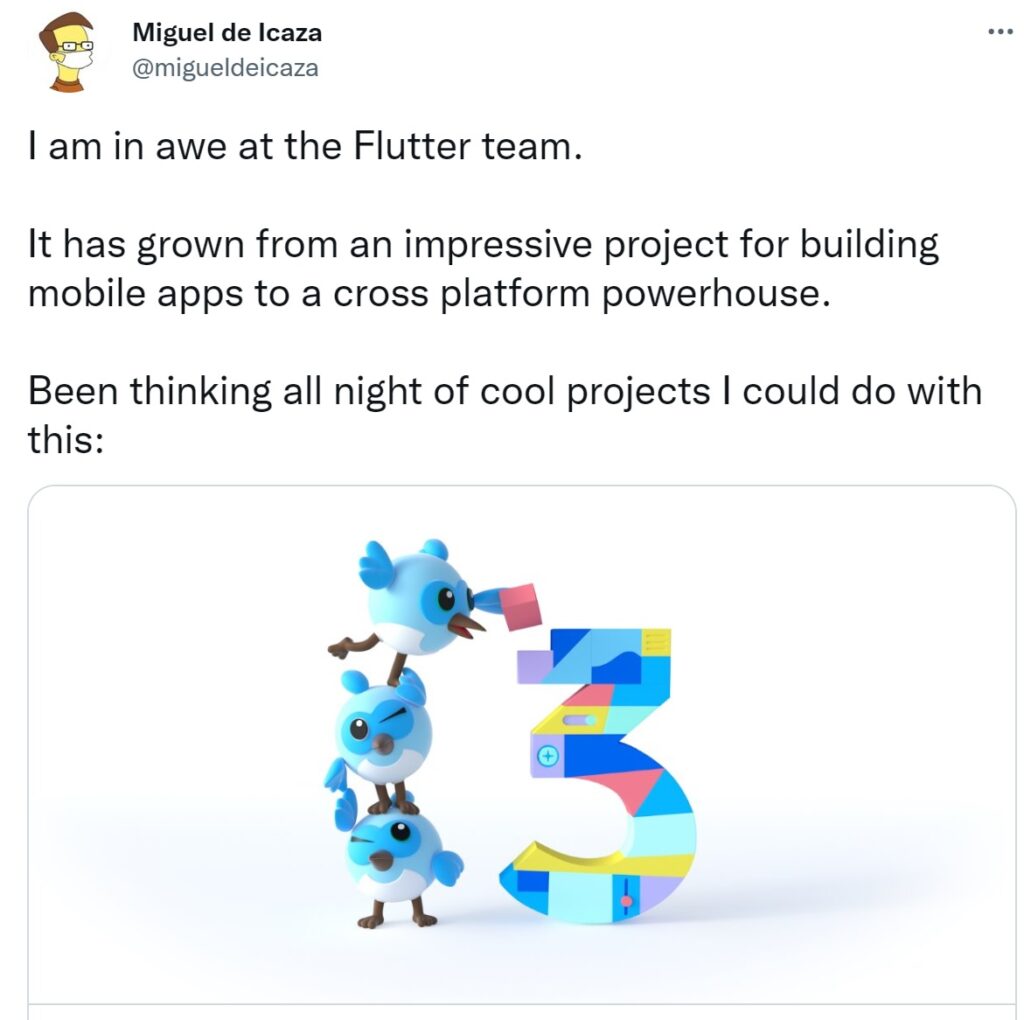
Google’s Flutter framework is now cross-platform for mobile, web and desktop
Google released Flutter 3 at its I/O event last week, with product manager Tim Sneath declaring that it “completes our roadmap from a mobile-centric to a multiplatform framework.”
Flutter 1.0 was released at the end of 2018, at which time it was solely for Android and iOS. It is built on the Dart programming language, which compiles either to native code or to JavaScript, and the Skia cross-platform 2D graphics library. Dart is optimized for building user interfaces, and has been boosted by its use for Flutter.
“Some thirty-six months after Dart was languishing about in the mid-30’s, it has not only cracked the Top 20, it has tied the developer darling Rust in doing so,” noted RedMonk analyst Stephen O’Grady commenting on a recent programming language survey.
Flutter 2.0 in March 2021 added web applications as a stable release and previewed support for Windows and MacOS. Production support for Windows followed in Flutter 2.10, and now with Flutter 3 macOS and Linux are also fully supported.
On macOS, Flutter 3.0 compiles universal binaries which run on both Intel and Apple Silicon. Linux support has been done in collaboration with Canonical which is using Flutter for the Ubuntu installer and for mobile and desktop applications.
Flutter 3.0 also adds support for Material Design 3, the latest version of Google’s design language, at least to the extent that it is “largely complete,” according to Sneath. He also stated that 62% of Flutter developers use Google’s Firebase application services, the integration code for which is now moved to the main Firebase SDK. There is also a new casual games toolkit.
Sneath is ex-Microsoft, where he worked on Silverlight, a cross-platform .NET framework that was abandoned when the ill-fated Windows 8 was in development. Microsoft acquired Xamarin as its solution for cross-platform mobile development, and is soon to release .NET MAUI (Multi-application App UI) based on Xamarin but with support for Windows and macOS as well as iOS and Android.
Flutter has strong developer take-up (as shown by Dart’s increasing popularity), where MAUI has been delayed and has lost momentum.
Although they are obvious competitors, Microsoft’s Principal Program Manager Richard Lander said that “Flutter and MAUI are not equivalent. One is a rendering engine (writes pixels) and the other is an abstraction,” referring to the fact that Flutter draws its own visual components whereas MAUI wraps native controls.
Microsoft has nevertheless worked with Google on some parts of Flutter, particularly support for foldable devices like its Surface Duo.
Perhaps one of the more significant accolades for Flutter then comes from Miguel de Icaza, co-founder of Xamarin, who departed Microsoft in March. “I am in awe at the Flutter team,” he said. “It has grown from an impressive project for building mobile apps to a cross platform powerhouse.”

